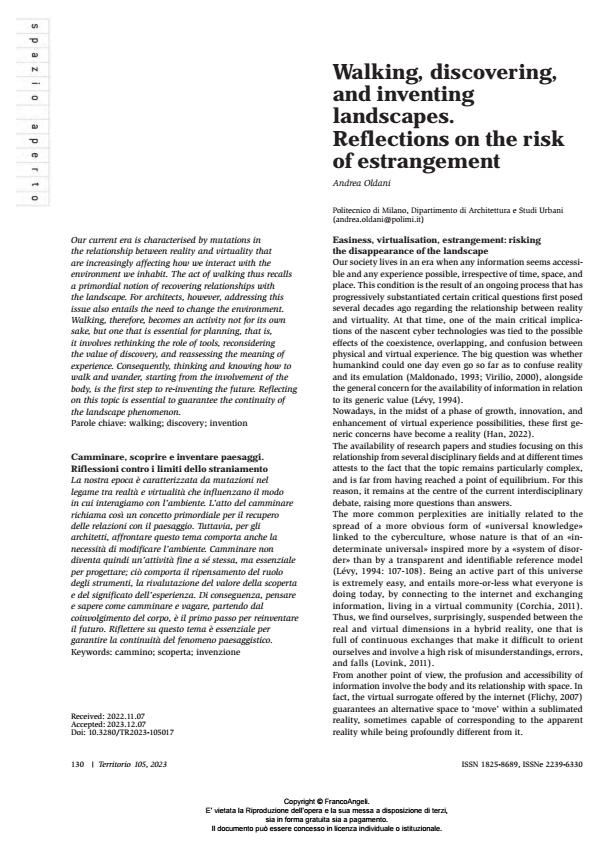Walking, discovering, and inventing landscapes. Reflections on the risk of estrangement
Journal title TERRITORIO
Author/s Andrea Oldani
Publishing Year 2024 Issue 2023/105
Language English Pages 8 P. 130-137 File size 404 KB
DOI 10.3280/TR2023-105017
DOI is like a bar code for intellectual property: to have more infomation
click here
Below, you can see the article first page
If you want to buy this article in PDF format, you can do it, following the instructions to buy download credits

FrancoAngeli is member of Publishers International Linking Association, Inc (PILA), a not-for-profit association which run the CrossRef service enabling links to and from online scholarly content.
Our current era is characterised by mutations in the relationship between reality and virtuality that are increasingly affecting how we interact with the environment we inhabit. The act of walking thus recalls a primordial notion of recovering relationships with the landscape. For architects, however, addressing this issue also entails the need to change the environment. Walking, therefore, becomes an activity not for its own sake, but one that is essential for planning, that is, it involves rethinking the role of tools, reconsidering the value of discovery, and reassessing the meaning of experience. Consequently, thinking and knowing how to walk and wander, starting from the involvement of the body, is the first step to re-inventing the future. Reflecting on this topic is essential to guarantee the continuity of the landscape phenomenon.
Keywords: walking; discovery; invention
Andrea Oldani, Walking, discovering, and inventing landscapes. Reflections on the risk of estrangement in "TERRITORIO" 105/2023, pp 130-137, DOI: 10.3280/TR2023-105017